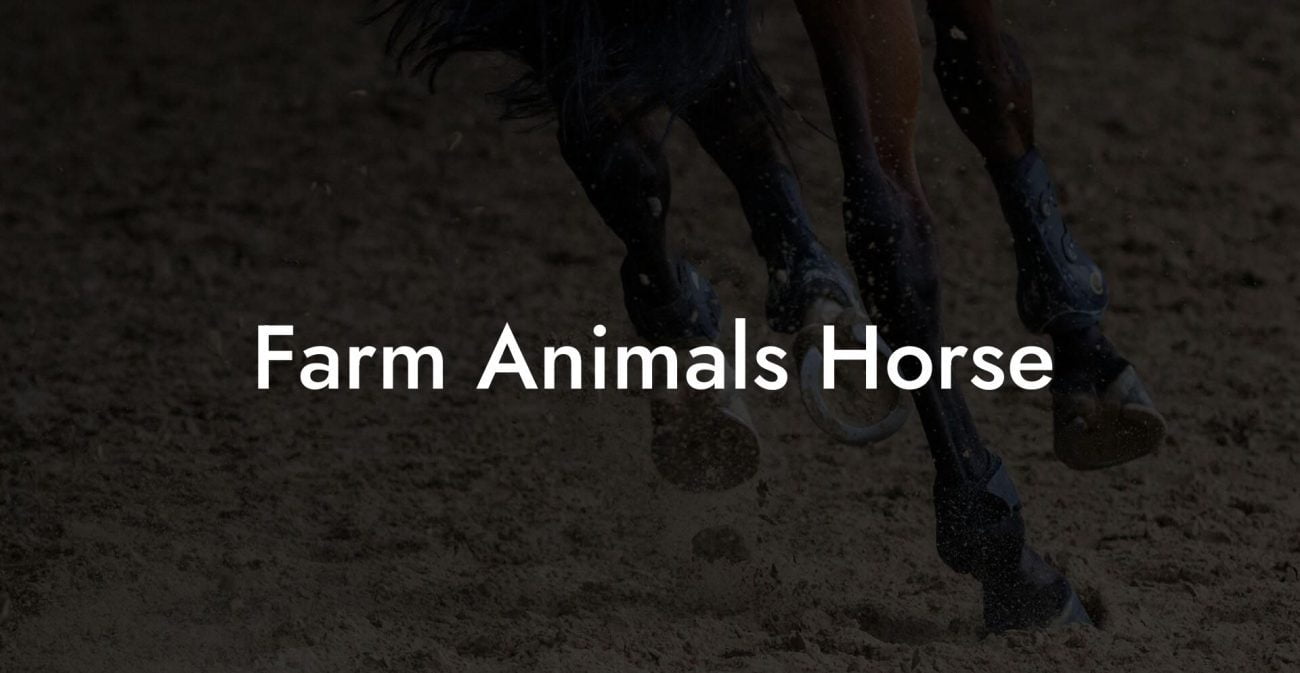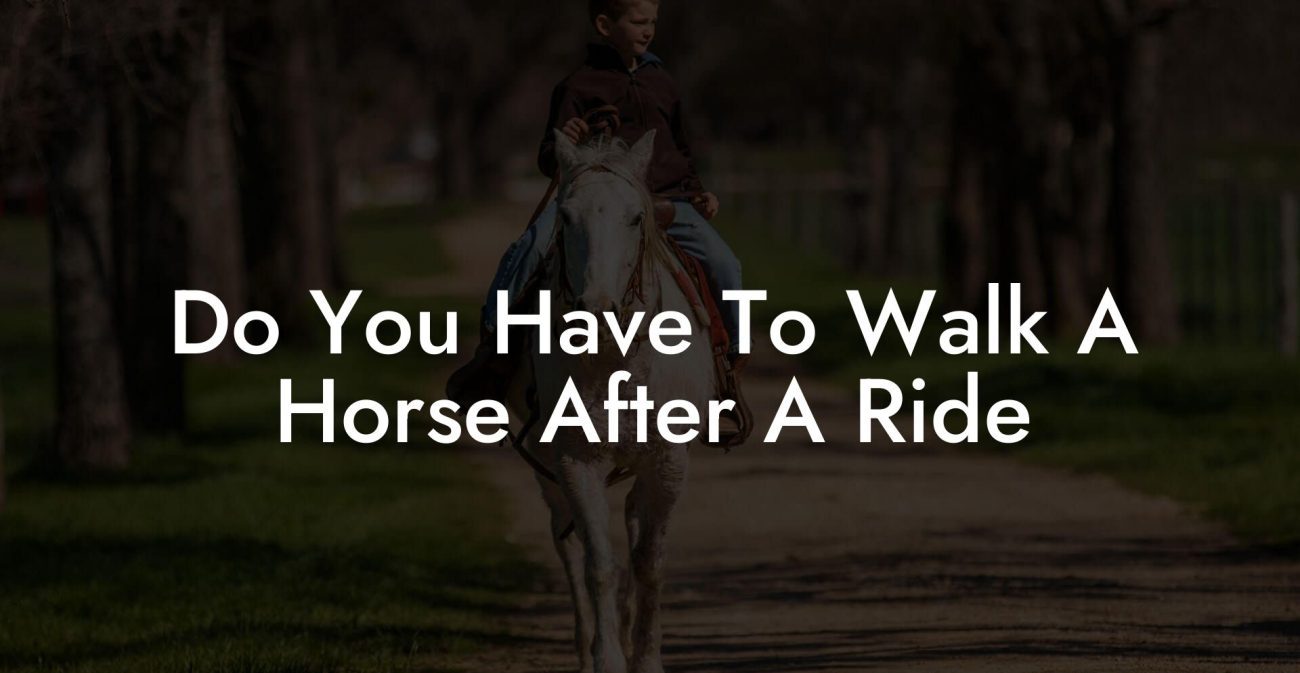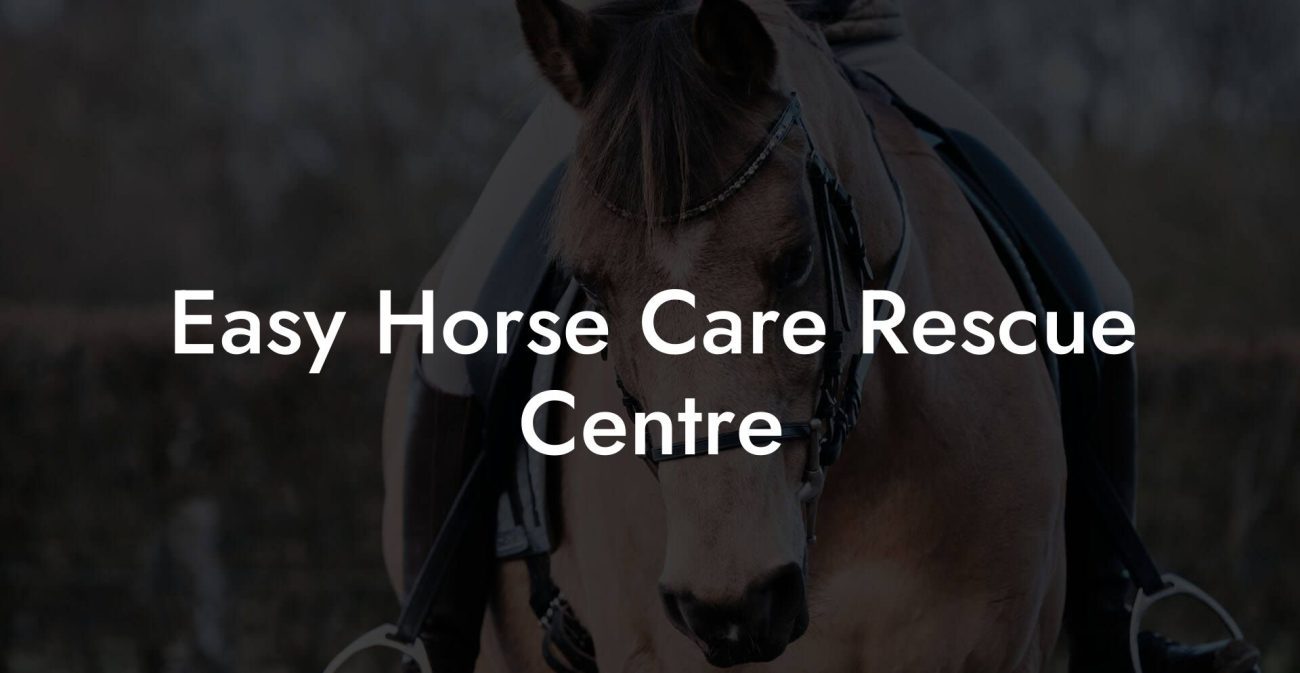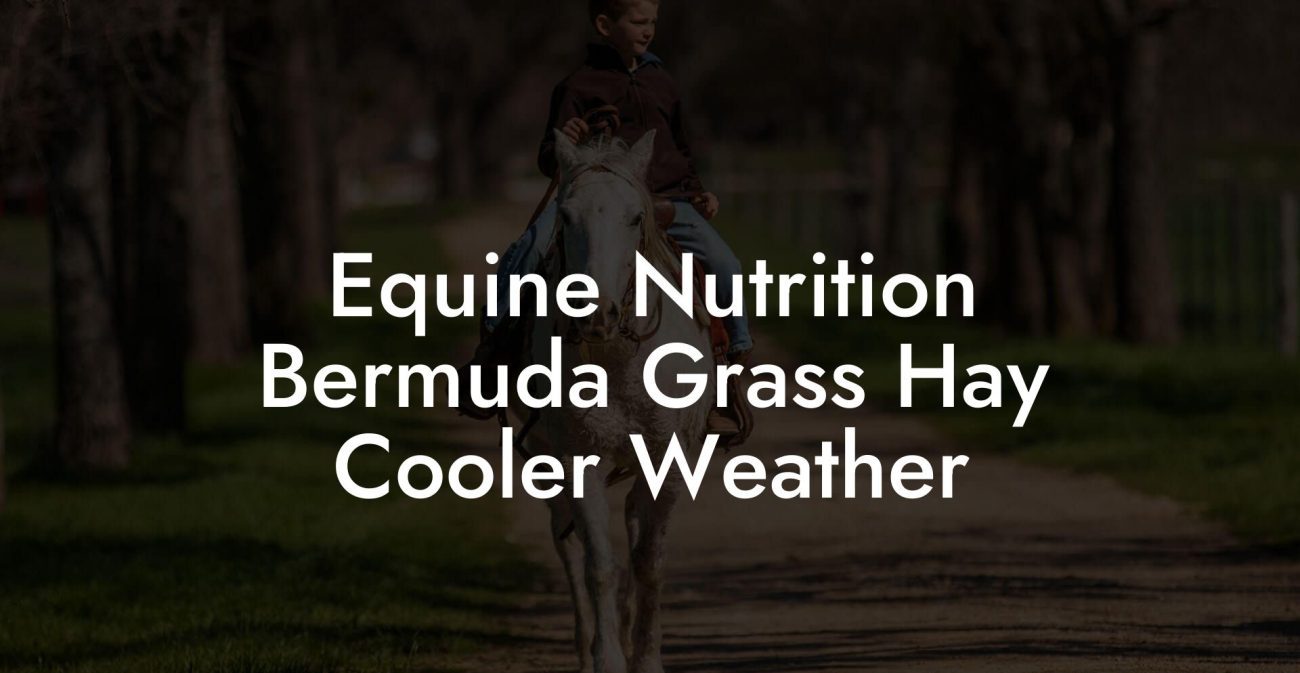When your four-legged BFF starts acting all weird and you catch that unmistakable “this isn’t my usual gallop” look in its eyes, you might be staring down the barrel of horse colic. This isn’t just another equine mood swing—horse colic is serious business that can have you scrambling for your phone to call the vet faster than you can say “hay fever.” In this in-depth guide, we’re diving hoof-first into the nitty-gritty of horse colic symptoms, helping you identify the red flags, understand what’s causing the pain, and explore both conventional and holistic approaches to keeping your majestic steed happy and healthy.
Quick Links to Useful Sections
- Understanding Horse Colic: More Than Just a Tummy Ache
- Decoding the Symptoms: How to Recognize Horse Colic
- Types of Colic: From Gas Buildup to Twisting Terrors
- 1. Gas Colic
- 2. Impaction Colic
- 3. Displacement or Torsion Colic
- 4. Enteroliths and Other Concretions
- The Root Causes: Why Does Horse Colic Happen?
- When to Call the Vet: Recognizing an Emergency
- Initial At-Home Measures: What You Can Do Before Help Arrives
- 1. Remove Food and Water Temporarily
- 2. Walk Your Horse Gently
- 3. Monitor Vital Signs
- 4. Create a Calm Environment
- The Vet’s Role: Diagnostics and Treatment Options
- Holistic and Integrative Approaches: Complementing Veterinary Care
- Herbal Remedies and Supplements
- Acupuncture and Chiropractic Care
- Mindful Management and Stress Reduction
- Prevention is Better Than Cure: Proactive Strategies to Minimize Colic Risks
- Case Studies: Real-Life Stories of Colic Survival and Recovery
- The Midnight Crisis
- Sandy’s Impaction Journey
- Twist of Fate: The Urgent Torsion
- Resources and Community Support: Your Next Steps
- Personalizing Your Horse’s Care: Tailored Strategies for Long-Term Wellness
- Step 1: Comprehensive Health Evaluation
- Step 2: Tailored Dietary Regiment
- Step 3: Structured Exercise and Grazing Routine
- Step 4: Stress-Reduction Techniques
- Step 5: Regular Monitoring and Adjustments
- Integrating Technology in Equine Care
- Proactive Emergency Preparedness for Colic
- Your Journey to Equine Wellness: A Lifelong Partnership
- Colic FAQs: Your Most Pressing Questions Answered
- Embrace the Journey: Empowering Your Equine Companion’s Future
Understanding Horse Colic: More Than Just a Tummy Ache
Horse colic isn’t a single disease—it’s an umbrella term that covers a range of digestive disorders in horses. Think of it as the equine equivalent of your worst bloating days after that extra-large burrito, only, you know, 100 times more intense.
At its core, colic refers to abdominal pain which can be caused by a variety of factors from gas buildup to impaction, intestinal twists, or even a blockage. Unlike a simple case of indigestion in humans, colic can quickly turn into an emergency that may threaten your horse's life if not addressed promptly. The term “colic” might sound vague, but when you see your horse acting uneasy, it's a clear signal to get to the root of the issue.
In modern equine care, understanding the symptoms of horse colic is crucial. Not only does early detection save lives, but it also allows you to develop a proactive management plan that minimizes the risk of future episodes. For those riding the wave of Gen-Z and millennial pet care trends, staying informed isn’t just a good idea—it’s practically a lifestyle.
Decoding the Symptoms: How to Recognize Horse Colic
Recognizing colic in horses can feel like trying to decipher an emoji-only text from your BFF—it’s a mix of subtle hints and overt signals. However, when it comes to your horse, every gesture counts. Here are the key symptoms that can hint at colic:
- Restlessness and Stamping: Watch for your horse pawing at the ground, shifting weight, or repeatedly lying down and getting back up.
- Rolling or Kicking at the Belly: A classic sign—if your horse is rolling on the ground or frequently kicking at its midsection, it’s a cry for help.
- Reduced Appetite: A horse that suddenly isn’t interested in its feed or water might be experiencing discomfort in its gut.
- Abnormal Behavior: Signs of lethargy, unusual sweating, or a noticeable change in demeanor signal that something is off.
- Changes in Bowel Movements: Look out for reduced or absent manure output, diarrhea, or striking changes in manure consistency.
- Distended Abdomen: The belly may appear bloated or unusually firm to the touch.
- Increased Heart Rate: Elevated pulse and rapid breathing can be telltale indicators of severe pain and distress.
Remember, these signs aren’t always obvious, and not every horse will show every symptom. Being in tune with your horse’s normal behavior is key—if something feels off, it probably is. In the world of equine care, trust your gut (and your horse’s belly!).
It’s also essential to note that the severity of symptoms can vary. Mild colic might show only subtle signs, while more severe cases will have your horse visibly in distress. Keeping a close eye on your horse’s behavior, appetite, and overall energy is your best defense against a potentially life-threatening condition.
Types of Colic: From Gas Buildup to Twisting Terrors
Just like there are different flavors of your favorite pizza, colic comes in various types, each with its unique triggers and treatment plans. Here are the primary types of colic you need to know:
1. Gas Colic
Gas colic is one of the most common forms, occurring when gas builds up in the intestines causing pain and discomfort. It can happen suddenly and is often seen in horses on a high-grain diet or with abrupt changes in diet.
2. Impaction Colic
Impaction colic occurs when food, sand, or even fibrous material accumulates in the intestines and blocks the flow of digesta. This type is particularly common in horses that graze on sandy soils or have a history of inadequate hydration.
3. Displacement or Torsion Colic
Perhaps the most dramatic of the bunch, displacement or torsion colic happens when the intestinal tract is twisted or displaced. This is a medical emergency that often requires surgical intervention. Think of it as a major plot twist in your horse’s digestive drama.
4. Enteroliths and Other Concretions
In some cases, mineral deposits can form in the intestines, creating enteroliths that act as blockages. This type of colic is less common but can be tricky to diagnose and manage.
Each type of colic has its set of potential triggers and risk factors, and knowing the distinctions can help you act swiftly and decisively. Whether it’s a case of gas buildup after a heavy meal or a more sinister intestinal twist, recognizing the type of colic early can make all the difference in the outcome.
The Root Causes: Why Does Horse Colic Happen?
Understanding what causes colic in horses can save you a lot of heartache—and vet bills. While every horse is different, several common risk factors tend to jump to the forefront:
- Dietary Changes: Sudden shifts in feed type or schedule can wreak havoc on your horse’s sensitive digestive system.
- Dehydration: Horses need a steady supply of water; insufficient hydration can lead to impactions and other digestive issues.
- Lack of Forage: Horses are built to graze. A limited intake of roughage can upset the natural rhythm of their digestion.
- Stress: Just like humans, horses can suffer from the physical effects of stress. Changes in environment, routine, or even the weather can trigger colic episodes.
- Underlying health Conditions: Parasites, infections, or previous incidents of colic can increase the risk of future episodes.
- Poor Dental Health: Dental problems can lead to poor mastication, making digestion less efficient and raising the risk of colic.
- Environmental Factors: Horses grazing on sandy or dusty ground are prone to ingesting non-food items, leading to impactions.
The good news is that by understanding these risk factors, you can take proactive measures to reduce the likelihood of colic. From gradual dietary transitions to ensuring constant access to clean water, a few mindful adjustments can go a long way in protecting your equine companion’s digestive health.
When to Call the Vet: Recognizing an Emergency
Let’s get real—if your horse is showing clear signs of colic, haste is of the essence. Knowing when to call the vet can be a game changer in minimizing complications.
While mild colic might sometimes resolve on its own with a bit of rest and monitoring, certain warning signs indicate that professional help is urgently needed:
- Persistent or Severe Pain: If your horse doesn’t settle or if the symptoms intensify over a few hours, this is not a time to play “wait and see.”
- Excessive Rolling: Continuous rolling or wild, uncoordinated movements are signs that your horse is in significant distress.
- Abnormal Vital Signs: A rapid heart rate, labored breathing, or abnormal temperature readings are red flags that require immediate attention.
- No Response to Pain Relief: If your horse isn’t responding to initial measures like analgesics given by your vet, do not delay further intervention.
- Signs of Shock: Pale gums, sweating, or a collapse are clear indicators that your horse is experiencing a severe colic crisis.
Time is of the essence when it comes to colic. The sooner a veterinary professional can assess and diagnose the condition, the better the odds are for a swift, full recovery. For many horse owners, having your vet’s number on speed dial isn’t just preparation—it’s a non-negotiable survival tip.
Initial At-Home Measures: What You Can Do Before Help Arrives
While a vet’s expertise is irreplaceable, there are a few steps you can take at home to help stabilize your horse while you wait for professional care:
1. Remove Food and Water Temporarily
In the early stages of colic, removing access to food and water might help prevent further digestive upset. However, if your horse shows signs of dehydration, consult your vet before withholding fluids.
2. Walk Your Horse Gently
If your horse is able to move, a slow walk in a safe, enclosed area can help stimulate gut motility. Avoid overexertion—this isn’t the time for a jog or canter.
3. Monitor Vital Signs
Keep an eye on your horse’s heart rate, respiratory rate, and overall behavior. Jot down any changes; these details can be incredibly helpful for your vet.
4. Create a Calm Environment
Stress can worsen colic symptoms. Ensure your horse is in a quiet, comfortable area away from loud noises or abrupt disturbances.
These at-home measures are only temporary solutions to bridge the gap until you receive veterinary care. Remember, if symptoms escalate, it’s always better to err on the side of caution.
The Vet’s Role: Diagnostics and Treatment Options
Once your vet arrives, a thorough diagnostic workup is typically the first order of business. The vet will likely perform:
- Physical Exams: A detailed assessment including pain response, vital signs, and abdominal palpation.
- Rectal Exams: This common diagnostic tool helps identify impactions, displacements, or twists.
- Ultrasound and X-Rays: Imaging tests provide critical insights into what might be causing the pain.
- Blood Work: Lab tests can reveal signs of infection, dehydration, or electrolyte imbalances.
Treatment will depend on the diagnosis. In many cases, treatments can include:
- Medications: Pain relievers, anti-inflammatories, and drugs to stimulate gut motility.
- Fluid Therapy: IV fluids for dehydration and electrolyte imbalances.
- Surgical Intervention: In cases of severe displacement or torsion, surgery may be necessary.
Your vet will craft a treatment plan tailored to the specific type of colic your horse is experiencing, ensuring that every intervention is timely and targeted.
Holistic and Integrative Approaches: Complementing Veterinary Care
While conventional treatments are paramount, many horse owners are increasingly embracing holistic and integrative practices as complementary strategies. These approaches don’t replace emergency care, but they can serve as valuable adjuncts for recovery and prevention.
Herbal Remedies and Supplements
Certain herbal remedies are believed to soothe the digestive tract and reduce inflammation. Herbs like slippery elm, ginger, and fennel have been traditionally used to promote gastrointestinal health in horses. Always check with your vet before introducing any new supplements to your horse’s diet.
Acupuncture and Chiropractic Care
Acupuncture and chiropractic treatments are gaining traction in the equine world. These alternative therapies can help alleviate muscular tension and stimulate proper gut motility, often providing relief in the aftermath of a colic episode.
Mindful Management and Stress Reduction
Just as stress can trigger colic, managing stress effectively can help prevent it. Many horse owners incorporate elements of mindfulness—such as gentle stretching, consistent routines, and a calm environment—to keep both themselves and their horses in a relaxed state.
Integrating these holistic modalities with conventional veterinary care can create a well-rounded approach. This demands a delicate balance between science-backed treatments and natural, time-honored practices that cherish the unique bond between you and your horse.
Prevention is Better Than Cure: Proactive Strategies to Minimize Colic Risks
As any savvy horse owner knows, prevention is the secret sauce to keeping your horse in tip-top shape. Here are some proactive strategies to reduce the risk of colic:
- Consistent Feeding Schedules: Avoid sudden dietary changes. Gradually introduce any new feed over a period of 1-2 weeks.
- Quality Forage: Provide ample, high-quality hay to support your horse’s natural grazing habits. This encourages steady digestion and reduces the likelihood of impactions.
- Regular Hydration: Ensure your horse has constant access to clean, fresh water. Particularly in hot weather, hydration is crucial for preventing digestive disturbances.
- Dental Check-Ups: Regular dental evaluations help ensure that chewing and digestion proceed smoothly.
- Parasite Control: Keep a vigilant schedule of deworming and pest prevention to avoid any underlying conditions that could trigger colic.
- Stress Management: Maintain a calm, stable environment. Horses are intuitive creatures, and minimizing stress goes a long way in promoting overall wellness.
Incorporating these proactive measures not only enhances your horse’s quality of life but also underscores your commitment to holistic, long-term equine health. It’s about creating a well-oiled, stress-free system where colic becomes the exception rather than the rule.
Case Studies: Real-Life Stories of Colic Survival and Recovery
Sometimes, nothing speaks louder than real-life examples. Here are a few compelling case studies that illustrate how recognizing symptoms early and integrating multiple approaches can save a life:
The Midnight Crisis
Bella, a spirited 12-year-old mare, began showing signs of restlessness and mild abdominal bloating late at night. Her owner, a millennial with a keen eye for detail, noticed that Bella wasn’t her usual vibrant self. Quick to act, they called the vet, who diagnosed the condition as mild gas colic. With prompt treatment and a short period of rest, Bella made a full recovery—a testament to the power of early detection and decisive intervention.
Sandy’s Impaction Journey
In another case, a grazing gelding named Sandy developed impaction colic after indulging in a particularly sandy paddock during a dry spell. The situation escalated quickly, and his owner worked hand-in-hand with a veterinarian to implement a blend of fluid therapy and gentle massage to relieve the blockage. Sandy’s recovery was steady, and his story now serves as a reminder of how environmental factors can play a crucial role in digestive health.
Twist of Fate: The Urgent Torsion
Perhaps the most dramatic case was that of Thunder, a robust stallion known for his boundless energy. One afternoon, Thunder began rolling frantically and showing signs of severe discomfort. Recognizing the gravity of the situation, his owner immediately contacted the vet. Diagnosed with torsion colic, Thunder underwent emergency surgery. The combined efforts of a skilled surgical team and vigilant postoperative care saw him recover—and eventually return to his galloping glory.
These stories remind us that horse colic is not a monolithic condition—it has many faces, and each requires a unique blend of vigilance, empathy, and expertise.
Resources and Community Support: Your Next Steps
Caring for a horse isn’t a solo mission. Whether you’re a seasoned equine enthusiast or a new owner navigating the maze of horse care, remember that you’re part of a vibrant, supportive community. Here are some resources and next steps you can explore:
- Online Forums and Social Media Groups: Engage with communities on platforms like Facebook, Reddit, and Instagram where fellow horse owners share experiences, tips, and success stories related to colic and overall equine health.
- Equine Health Websites: Websites such as the American Association of Equine Practitioners (AAEP) and The Horse provide in-depth articles, case studies, and expert advice on managing colic and other health concerns.
- Local Veterinary Clinics: Build a relationship with a trusted local vet who can provide regular check-ups and personalized advice tailored to your horse’s unique needs.
- Workshops and Seminars: Attend events and webinars on equine health, nutrition, and holistic care practices to stay updated on the latest research and techniques.
- Mobile Apps for Equine Care: Leverage technology with apps that track your horse’s health, monitor feeding schedules, and send alerts for any unusual behavior that could signal colic.
Remember, the road to equine wellness is paved with community support. Engaging with fellow horse enthusiasts not only expands your knowledge base but also provides an invaluable network of people who truly understand the highs and lows of horse care.
Personalizing Your Horse’s Care: Tailored Strategies for Long-Term Wellness
Every horse is as unique as the human behind its bridle. Creating a personalized care plan that addresses both the physical and environmental factors contributing to colic can set your horse on the path to long-term health. Here’s how to develop a care plan that’s as individual as your equine companion:
Step 1: Comprehensive Health Evaluation
Start by scheduling a thorough health assessment with your veterinarian. This should include a physical exam, dental check, and an evaluation of your horse’s overall nutrition and hydration habits.
Step 2: Tailored Dietary Regiment
Work with your vet or an equine nutritionist to design a diet that minimizes colic risks. Gradually introduce new feeds, focus on high-quality forage, and ensure consistent access to water. Supplementing with electrolytes during hot weather can also be a lifeline.
Step 3: Structured Exercise and Grazing Routine
Develop a daily routine that balances controlled exercise with ample time for grazing. Routine walks and gradual increases in activity levels can stimulate proper gut motility, all while keeping your horse mentally engaged.
Step 4: Stress-Reduction Techniques
Incorporate stress-management strategies into your horse’s daily life. This might mean establishing a quiet, consistent living environment, integrating gentle grooming sessions, or even leveraging calming music tailored for horses.
Step 5: Regular Monitoring and Adjustments
Maintain a log of your horse’s behavior, feeding patterns, and any signs of discomfort. Regularly review this information with your vet to adjust the care plan as needed. This proactive approach not only helps catch early signs of colic but also creates a foundation for overall wellness.
By taking a personalized, proactive stance toward your horse’s care, you’re not just reacting to colic when it occurs—you’re building a resilient lifestyle that supports your horse’s health and happiness for the long haul.
Integrating Technology in Equine Care
Welcome to the digital age—your horse’s health can now benefit from the latest tech trends too! From wearable trackers that monitor vital signs to mobile apps that log feeding schedules and medical reminders, technology is transforming equine care.
Imagine getting real-time notifications if your horse’s behavior deviates from its norm, alerting you of potential signs of colic before things escalate. These innovations not only put you in the driver’s seat of your horse’s health but also offer peace of mind in today’s fast-paced world.
Embracing technology in equine care means harnessing data to make better, more informed decisions. Whether you’re using an app to coordinate with your vet or tracking your horse’s daily records on a smart device, these digital tools can be a game changer in reducing the risks of colic and ensuring your horse’s overall well-being.
Proactive Emergency Preparedness for Colic
No one wants to face a colic emergency, but being prepared can make all the difference. Develop an emergency plan that includes:
- Emergency Contact List: Keep your vet’s number, nearby emergency clinics, and trusted trainers on speed dial.
- Essential Supplies: Stock up on necessary items such as a cool, clean water supply, basic medications recommended by your vet, and digital tools to monitor your horse.
- Accessible Records: Maintain a digital and printed log of your horse’s health data that can be quickly shared with veterinary professionals during an emergency.
- training and Simulation: Periodically run through an emergency scenario with your stable team so that everyone knows their role if colic strikes.
Being proactive isn’t just about reacting to crises—it’s about creating a safety net that minimizes risks and ensures that you’re always one step ahead.
Your Journey to Equine Wellness: A Lifelong Partnership
As you become more adept at recognizing the subtle signs of colic and unfamiliar behaviors, you’ll realize that equine care is as much about intuition as it is about science. Each nudge, roll, or fleeting glance from your horse is part of an ongoing dialogue—a conversation that spans genetics, environment, and even the peculiar quirks of equine nature.
Embracing a holistic approach to horse colic isn’t solely about addressing emergencies when they arise; it’s about nurturing a relationship built on trust, vigilance, and proactive care. It’s about understanding that every feeding time, every walk in the pasture, and every moment of quiet observation contributes to a tapestry of wellness that can guard against future crises.
In the modern era—where millennial and Gen-Z pet care philosophies emphasize transparency, empathy, and community-driven knowledge—the responsibility of horse ownership extends beyond routine grooming. It’s a lifestyle choice that calls for continuous learning, adapting, and sharing experiences with others who are as passionate about equine well-being as you are.
So next time you notice that your horse behaves a little differently—perhaps a restless paw or a subtle roll—remember, knowledge is power. Trust your instincts, act quickly, and lean on the community and resources available to you. In doing so, you’re not only ensuring your horse’s immediate emergency care but also investing in a future of stable, vibrant health.
Your journey to equine wellness is a dynamic, evolving process. Embrace every challenge as a learning opportunity, and let each success strengthen the bond you share with your noble companion. With the perfect blend of modern technology, holistic care strategies, and timeless love for your equine friend, you are well-equipped to face the unexpected and thrive.
Colic FAQs: Your Most Pressing Questions Answered
Below you’ll find answers to some of the most frequently asked questions about horse colic, designed to address common concerns and provide clarity in times of uncertainty.
1. What exactly is horse colic?
Horse colic refers to abdominal pain caused by various digestive disturbances ranging from gas buildup to intestinal impactions or twists. It’s not a disease itself, but rather a set of symptoms requiring prompt evaluation.
2. Are all cases of colic life-threatening?
Not necessarily. While some instances are mild and can resolve with minimal intervention, others can escalate rapidly into life-threatening emergencies. Recognizing the severity of the symptoms is key.
3. How can I tell if my horse is suffering from colic?
Look out for signs like restlessness, rolling, reduced appetite, changes in bowel movements, abdominal bloating, and abnormal vital signs. Every horse is unique, so being familiar with your horse’s normal behavior is crucial.
4. Can colic be prevented?
While not all colic instances can be prevented, proactive management through a consistent diet, regular hydration, proper dental care, and a stress-free environment can significantly reduce the risk.
5. What should I do if I suspect my horse has colic?
If you observe signs of colic, contact your veterinarian immediately. In the meantime, follow at-home care strategies such as limiting feed, walking your horse gently, and keeping a close eye on its condition.
6. Are there any holistic treatments for colic?
Yes, aside from conventional treatments, some horse owners explore herbal remedies, acupuncture, and chiropractic care as complementary therapies to help manage and prevent colic episodes.
7. How effective is early intervention when it comes to colic?
Early intervention is crucial and can be life-saving. Recognizing the early symptoms of colic and seeking veterinary care immediately greatly improves recovery outcomes.
8. What role does technology play in preventing colic?
Modern technology, including wearables and mobile apps, helps monitor your horse’s health in real time—alerting you to changes in behavior or vital signs that could indicate early symptoms of colic.
Being informed and prepared is your best defense against the unexpected challenges of horse colic. Each moment of vigilance can help safeguard the health and happiness of your equine companion.
Embrace the Journey: Empowering Your Equine Companion’s Future
At the end of the day, being a responsible horse owner is all about staying informed, proactive, and deeply connected to your equine friend. Recognizing the symptoms of colic early can mean the difference between a minor hiccup and a full-blown emergency.
From understanding the various types of colic and their causes to employing integrative approaches that complement traditional veterinary care, every strategy you adopt is a step towards a longer, healthier life for your horse. In the world of equine care, knowledge isn’t just power—it’s a lifeline.
So lace up your boots, keep that vet’s number close, and don’t be afraid to turn to the thriving community of horse enthusiasts and experts out there. Your journey to safeguarding your horse’s health is dynamic, evolving, and, above all, a testament to the deep bond you share.
By being vigilant, staying educated, and embracing both modern technology and time-tested holistic practices, you’re not only prepared to tackle colic head-on but also carving a path towards a future where your horse thrives. Here’s to many happy, healthy gallops ahead!













